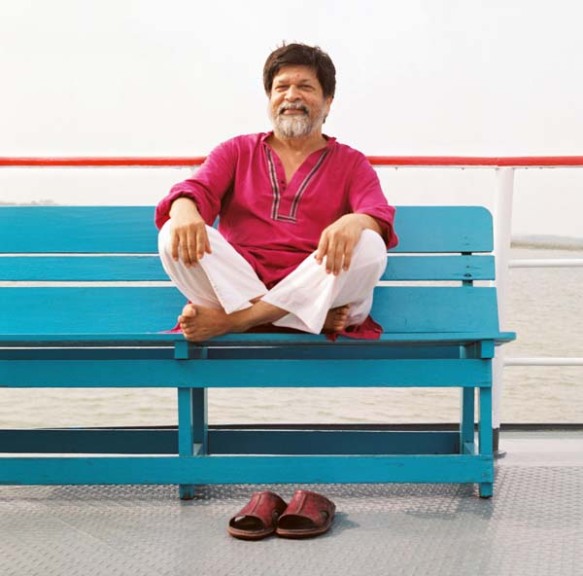To the rest of the world, Abu Ghraib is associated with inhuman torture, incarceration without trial and arrogant US unilateralism. To the farmers of Iraq, Abu Ghraib was better known for the national seed gene bank, started in the early 70s. In fact, Iraq?s most well-known wheat variety is known as ?Abu Ghraib?. The country precious heritage is now all but lost.
Facing the same unsolicited adversary, Syria is under a similar threat. The Centre for Agricultural Research in Dry Areas (ICARDA) is situated there and still holds remaining samples of Iraq?s threatened seeds. It is worrying because the planned destruction of Iraq?s agriculture is not widely known. Modern Iraq is part of the ?fertile crescent? of Mesopotamia where man first domesticated wheat between 8,000 and 13,000 years ago, and home to several thousand varieties of local wheat. As soon as the US took over Iraq, it became clear its interests were not limited to oil. In 2004, Paul Bremer, the then military head of the Provisional Authority imposed as many as a hundred laws which made short work of Iraq?s sovereignty. Continue reading “Control by seed”
Category: Law
Archiving 1971
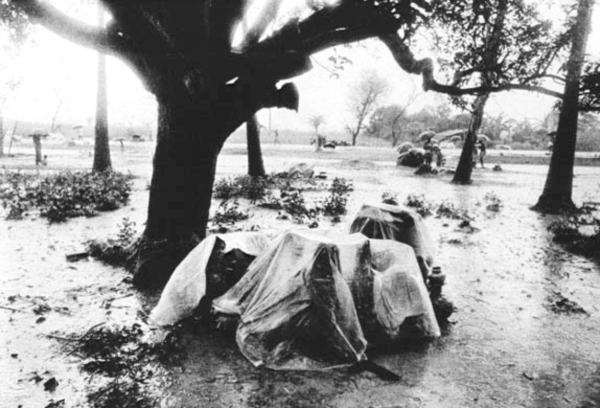
Photo: Don Mccullin
Archiving?1971
By Sharmin Ahmed
Star Weekend
Winston Churchill said, ?History is written by the victors.? And when history is one-sided, it becomes a propaganda instrument. Archiving is a form of respecting not only history but the truth, and it is with the motive of promoting the truth that documentation of history must be done. ?Archiving 1971?, a programme by Drik to collect oral, textual and visual resources to establish a one stop repository of the historical 1971 War of Liberation for Bangladesh began on that promise
The aim is to bring together a team of researchers, social scientists, historians, archivists and other professionals to assemble definitive archives of this important chapter in the country’s history. The 10-year plan includes not only collating materials from across the world but also generate the economic resources necessary to build permanent physical archives. It will help academics, researchers and others to make rigorous analysis and draw inspiration from the repository.
Art as a Witness
Shahidul Alam to speak at the Colombo Art Biennial : Art as a Witness
An extraordinary artist ? eloquent with words and images ? Shahidul Alam is a photographer, writer, activist and social entrepreneur, who was profoundly influenced by inequality in Bangladesh, his country and the liberation war. He left a career in science in the west to pursue a life in photography challenging oppression and imperialism in all its forms. Attacked, arrested, and threatened with death, Alam has built what many consider to be the finest photography school in the world, an award winning agency, and the world?s most demographically diverse photo festival. Widely celebrated, Alam claims as his achievements not the awards he has won or the impressive list of exhibits, but the people he has trained and the lives he has transformed. Continue reading “Art as a Witness”
Wearing her ghoonghat a few inches higher
Image and text contributed by Sreenivasan Jain, Mumbai
Some text is paraphrased from a recent Book ? Civil Disobedience, Sreenivasan?s father Late. Shri LC Jain, noted economist and Gandhian.
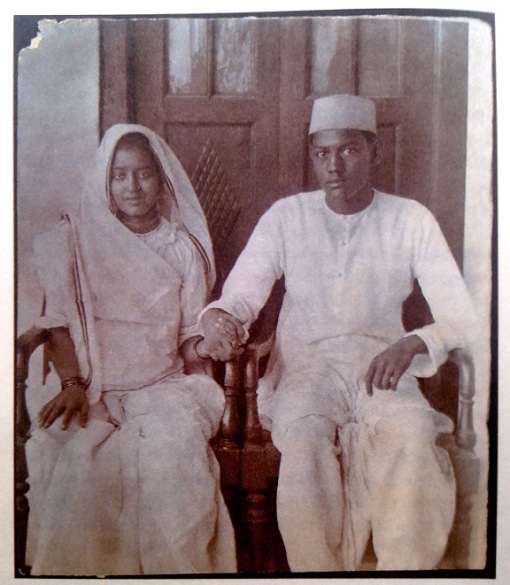
This image was photographed in Delhi, shortly after my Paternal grandparents Chameli and Phool Chand, got married. She was 14 and he was 16. It was unusual for couples in our family to be photographed, especially holding hands, which turned out to be an indication of the unconventional direction their lives would take. They were both Gandhians and Freedom fighters. Continue reading “Wearing her ghoonghat a few inches higher”
Songs of a Wounded Image
(Editor’s introduction to “Birth Pangs of a Nation” produced to commemorate the 40th anniversary of the birth of Bangladesh and the 60 anniversary of the establishment of UNHCR.)
The Bangladeshi War of Liberation, like all other wars, has a contested history. The number killed, the number raped, the number displaced, are all figures that change depending upon who tells the story.
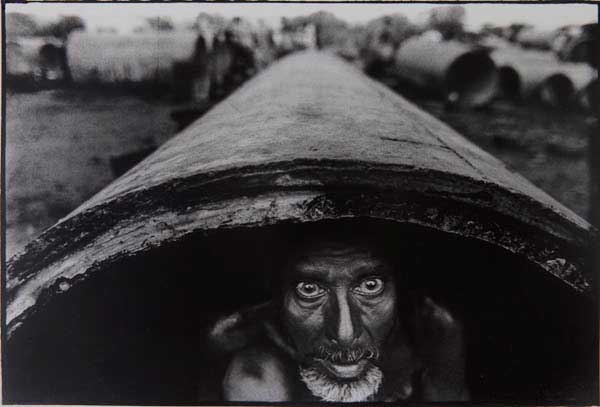
But in our attempt to be on the ?right side? of history, we often forget those who ended up on the wrong side. Those who have gone, those who were permanently scarred, mentally, physically, socially, don?t really care about our statistics. The eyes that stare into empty space, knowing not what they are searching, the frail legs, numbed by fatigue, drained by exhaustion, yet willed on by desperation, the wrinkled hands, seeking a familiar touch, a momentary shelter, longing for rest, do not care about the realpolitik of posturing superpowers.
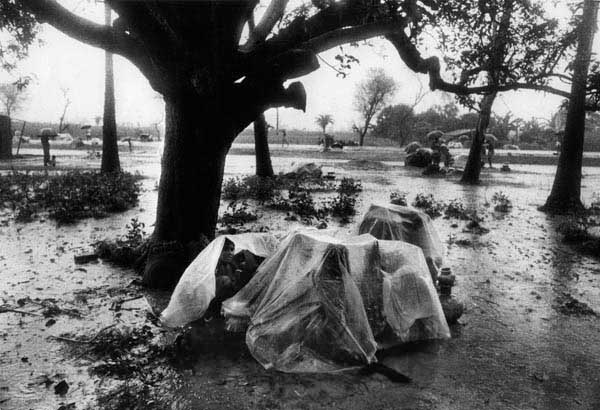
Is a 40th anniversary more than a convenient round number in a never-ending cycle of the displacement of the weak? Is a 60th anniversary more than a celebration of a milestone amongst many, where brave men and women have stood by those in need, but watched in silence as the perpetrators of injustice continued in their violent ways, leaving them to deal with the fallout?
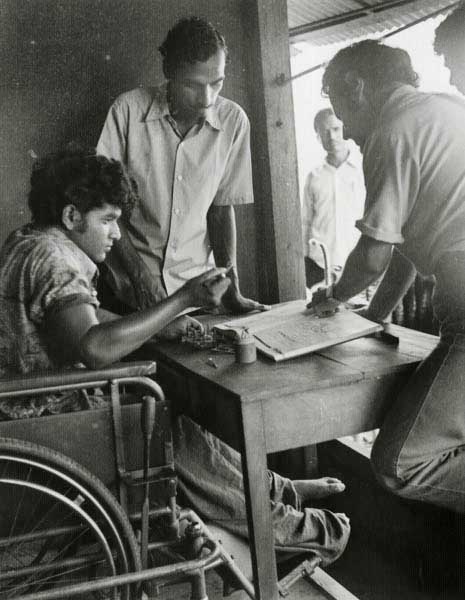
Continue reading “Songs of a Wounded Image”
WB finds graft rampant in govt, NGOs
By David Bergman
The New Age
Thursday, 2 February, 2012
Five non-governmental organisations have admitted to the World Bank that they made corrupt payments to Bangladesh government officials to receive contracts under a bank-funded project.
The admissions are contained in a report of an investigation which the World Bank?s Integrity Vice President conducted into the disbursement to hundreds of NGOs of part of a $53.3 million loan that the bank had given the Bangladesh government to further post-literacy continuing education.
Four of the five NGOs told World Bank investigators that to get a contract under the project, which lasted between 2001 and 2007, they each had to pay at least Tk 100,000 in bribes to government officials, money that was channelled to the officials through intermediaries.
Some NGOs had to pay as much as Tk 600,000 in bribes to obtain a contract, the investigators were told. Continue reading “WB finds graft rampant in govt, NGOs”
We
We!
The children are reduced to bones
And skin. Their tiny bodies
Have heads appearing far too large
And eyes that cry for help.
But there’s no shortage yet of guns
And bullets — or of bombs.
And soon enough, you hear them come —
The jets that scream through skies
And drop the rain that’s so obscene
That voices then fall still.
******
The drones that fly like sightless birds,
The tanks that roll through streets,
The men who fire on passers by,
Who buys and pays these?
We!
****** Continue reading “We”
Selective Outrage
Media Lens, London, 18 January 2012
News that a fourth scientist in two years, Mostafa Ahmadi Roshan, had been assassinated in Iran by an unknown agency generated minimal outrage in the press.
Patrick Cockburn notedin the Independent:
?While the identity of those carrying out the assassinations remains a mystery, it is most likely to be Israel’s foreign intelligence service, Mossad??
The Sunday Times published a meticulous account of the planning and execution of the attack provided by ?a source who released details? on the actions of ?small groups of Israeli agents? operating inside Iran. (Marie Colvin and Uzi Mahnaimi, ?Israel’s secret war,? Sunday Times, January 15, 2012)
Julian Borger?s article in the Guardian warnedagainst ‘Goading a regime on the brink.’
We wonder if the Guardian would have described the Iranian assassination of scientists on US or Israeli streets as ?goading?. We also wonder if Borger would have described these as terrorist attacks. Continue reading “”
?Have a Nice Day, Buddy:? What The Actions of a Few US Marines Say About us All
?Jan 13 2012 by?Sherene Seikaly and Maya Mikdashi
![[Left: US Marines urinating on dead Afghans. Image from AFP. Right: Afghan civilian dead on the road. Image from unknown archive] [Left: US Marines urinating on dead Afghans. Image from AFP. Right: Afghan civilian dead on the road. Image from unknown archive]](http://www.jadaliyya.com/content_images/3/Screenshot2012-01-12at4.54.26PM.png)
Then as now, brown bodies are the raw material through and upon which US soldiers realize their darkest fantasies and their deepest secrets. The pornography that popularized the ?golden shower? and the Islamophobia that fuels the War on Terror inspire these scenes. In them, US soldiers feminize Muslim men and demonstrate their power over them. US soldiers can and will sodomize, piss on, and otherwise sexually humiliate Muslim and/or Arab men. And the world will witness this confident hierarchy of masculinity through the dissemination of the torturer?s documentation. Continue reading “?Have a Nice Day, Buddy:? What The Actions of a Few US Marines Say About us All”
West Bank 2011: One year of Humiliation in a Two Minutes Video
It is a new year in the West Bank
And on Christmas, a rainy and great wind swept over the West Bank and East Jerusalem. Trees bent and roofs rattled but the wind couldn?t carry away the suffering, vulnerability and the long 365 days of humiliation.
 Israeli border soldier stands guard during repeated clashes with Palestinian demonstrators in the West Bank town of Qalandia in 2011
Israeli border soldier stands guard during repeated clashes with Palestinian demonstrators in the West Bank town of Qalandia in 2011
 IN the so called Middle East?s only democracy, they do not do guillotines. But there are other innovative rituals of humiliation, designed to reassure the Palestinians that every New Year could well be their last in the land of their ancestors, .. the land of olive trees. As the wind calms down everything returns to normal, but not for the Palestinians, they don?t. Continue reading “West Bank 2011: One year of Humiliation in a Two Minutes Video”
IN the so called Middle East?s only democracy, they do not do guillotines. But there are other innovative rituals of humiliation, designed to reassure the Palestinians that every New Year could well be their last in the land of their ancestors, .. the land of olive trees. As the wind calms down everything returns to normal, but not for the Palestinians, they don?t. Continue reading “West Bank 2011: One year of Humiliation in a Two Minutes Video”

